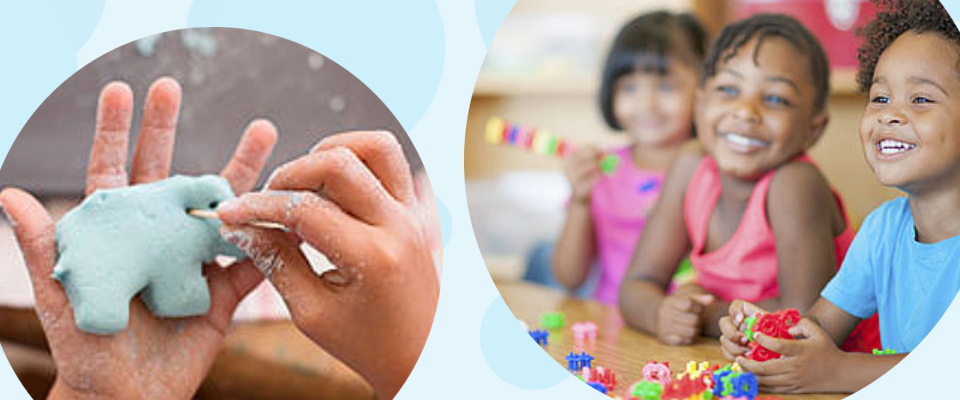You are here

82 Kids Living with Cerebral Palsy Helped Make an Exciting Discovery About Brain Wiring and Hand Movement Training
Kids living with Cerebral Palsy (CP) have varied brain wiring patterns.
82 children living with CP helped to discover that this difference in brain wiring does not impact how well hand training therapies work. According to a recent clinical randomized trial conducted by the Burke Neurological Institute, Teachers College of Columbia University, the Universidade Federal de Minas Gerais, Queens College City University of New York, and the Université Catholique de Louvain, improvements in upper extremity function following intensive training are independent of corticospinal tract organization in children with unilateral spastic cerebral palsy.
In some kids with CP, each side of their brain controls movement of the opposite side of the body. In others, one side of the brain controls movement of the whole body—as researchers, we think that’s really cool!
Before this study, some scientists thought that the way a child’s brain is wired might determine whether training only affected one hand (constraint), or training both hands (bimanual), might be best for that child.

Determining which side of the brain controls each kid’s affected hand.
In our study, the research team determined which side of the brain controls each kid’s affected hand in 82 kids living with CP. Then, each kid was randomly assigned to receive 90 hours of constraint or bimanual training over 3 weeks. Each kid’s hand movement ability was tested before and after training. We observed how hand movement ability changed in kids in both training groups. We also looked to see if kids improved differently based on their brain wiring pattern.
82 kids with CP helped us discover that kids can improve equally well with either type of training, no matter how their brains are wired. This is fantastic news! Making discoveries helps to advance future hand movement training therapies. Thanks to the generosity of our young participants and caregivers who made this study possible. To learn more about this study a research paper is now published online at Frontiers in Neurology.
Want to know more?
Kids completed a lot of tests. What were they for? What did they show?
You may remember the long tests we did. Thank you so much for participating in all of these measurements! We know it took a lot of time, and we are so grateful.
Hand/Arm Testing
Remember those games you played with people who work in the lab? We measured your hand movement ability. We found that kids’ hand movement ability improved after camp, no matter which training type they did and no matter how their brain was wired.
Magnetic Resonance Imaging (MRI)
For this test, you laid inside a noisy tube that is a gigantic camera. It took a picture of your brain. Different kids with CP have different types of brain lesions, which we could see on each MRI. We found that kids can improve no matter what type of brain lesion they’ve got.
Transcranial Magnetic Stimulation (TMS)
For this test, we put electrode stickers, connected to wires, on your hands and arms. You might remember TMS as “movie time!” We used a blue wand to stimulate different parts of your brain. This showed us which sides of your brain controlled your hands. The TMS stimulations were very small. The stimulations were not changing your brain, they were measuring your brain!
How did we figure out what all these tests mean?
Researchers use a type of math called statistics. Statistics test whether one group of numbers is different from another group of numbers. We used statistics to compare hand movement ability before and after camp for each type of training and each type of brain wiring pattern!
What does this whole study mean?
Kids with CP are amazing! 90 hours of hand training - either constraint or bimanual - can improve a child’s hand movement ability. Kids can improve no matter how their brain is wired!
What’s next for our research program?
- Home Based Tele-Exercise for People with Chronic Neurological Impairments
A new study for adults with CP, offering a 12-week seated exercise study that is done completely over zoom and is underway even during the pandemic! - Bimanual Training & Transcranial Direct Current Stimulation (Tdcs) on Hand Function in Children with Hemiplegia
For kids, we will be offering a 5-day study in which kids receive brain stimulation and 2 hours of bimanual (both hands) training each day. We’ll resume this study once it is safe, because we must do this study in person.





